The Cape Cod Trash Tote program made possible with support from The Bilezikian Family Foundation.
If you have questions about the Cape Cod Trash Totes or are interested in using one, contact Stephanie Murphy, samurphy@whoi.edu.
The Trash Tote is an easy to use, transportable educational tool providing information on marine pollution for people participating in beach cleanups and outreach events, or as a supplement to a formal lesson plan. The Trash Tote contains the related educational materials and can also be used for collected trash during beach clean-ups. Because single-use plastics make up most marine pollution, the Cape Cod Trash Tote emphasizes the need to be aware of plastic in our environment and encourages individuals to dispose of it properly and to choose reusable products over ones made of plastic.
* Two notes about safety:
- If you are conducting beach cleanups, we recommend using the grabber or gloves for picking up potentially hazardous items likes knives, blades, or syringes.
- Very rarely, people will encounter unexploded ordnance, or UXO, buried in the sand - remains of large-scale Naval exercises held during World War II. Do not touch or attempt to move these. Call the police for removal by a bomb squad.
What's in the Cape Cod Trash Tote?
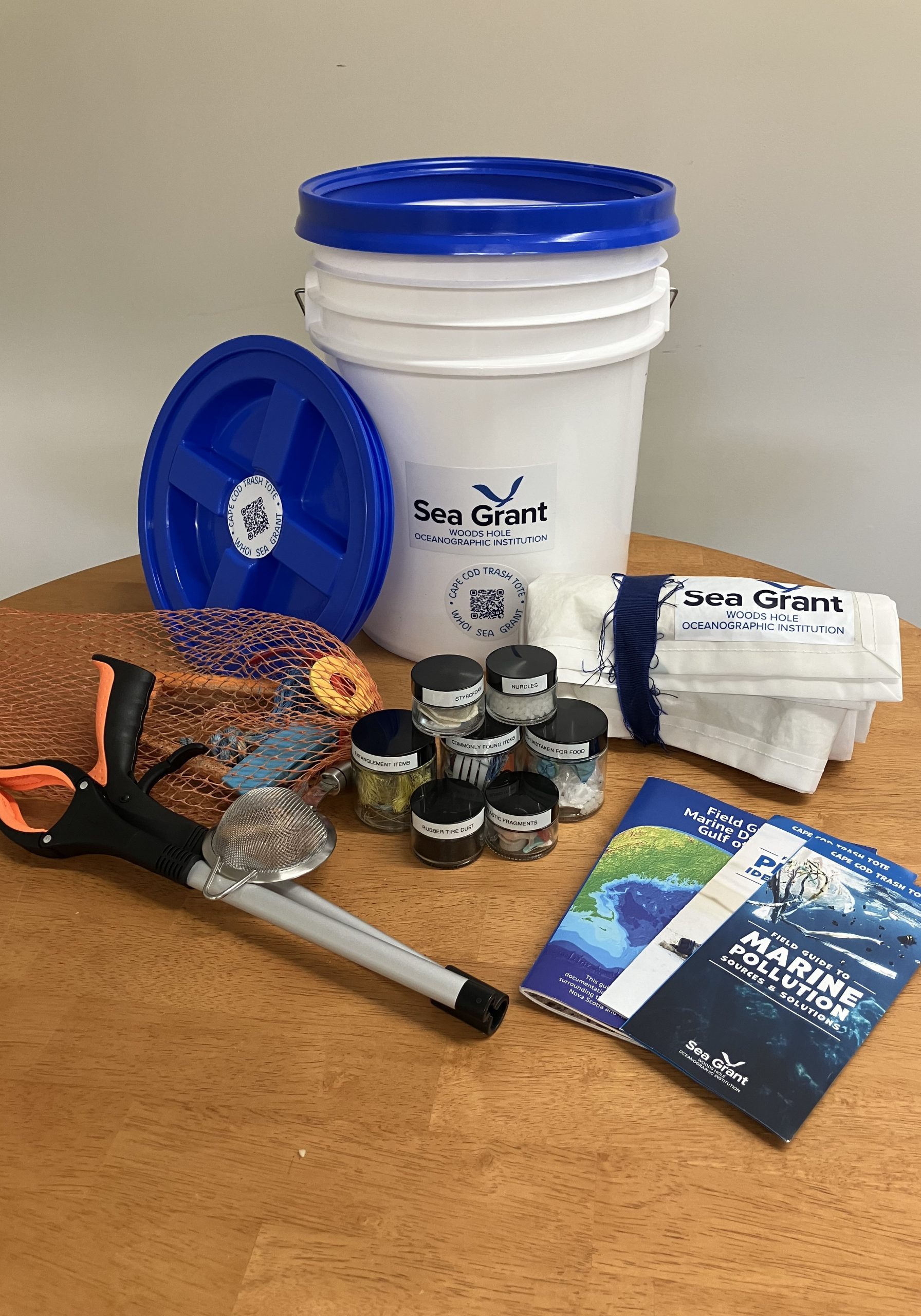
The Cape Cod Trash Tote contains:
- The tote. Use the tote for collecting trash, rather than using and discarding new plastic trash bags. The tote can be rinsed and reused many, many times. Contact WHOI Sea Grant for additional lightly used buckets for clean-ups.
- A tarp. Following a clean-up, use the tarp for sorting and cataloging the types of trash collected on a data card. The tarp is made from sailcloth remnants and can be wiped down or hosed off after a clean up and then folded and returned to the Trash Tote.
- A trash grabber. Trash can sometimes be tangled in hard-to-reach places like briars at the edge of the beach. During a clean-up, one person can be the designated grabber or participants can take turns using the grabber to pick up hard to reach trash.
- A sifter. Participants in the beach clean-up can use the sifter to see if they find plastic fragments among the sand grains. Take the fragments and some grains of sand back to the classroom and look at them up close under a microscope.
- Data card. Keep track of the trash collected, graph it, track quantities of it through different seasons and weather events over time. Make copies of the card (Ocean Conservancy or CCS) or use an app, such as CleanSwell or the NOAA Marine Debris Tracker. (Also see Resources section.)
- A Field Guide to Marine Debris. Created by the Center for Coastal Studies, this is the ultimate comprehensive guide to identifying items found on the beach. For those hard-to-identify items found on the beach, use this guide to find out what it is and what it was used for. (Download PDF)
- The WHOI Sea Grant Guide to Plastic Identification. Learn about the common sources of microplastics and the seven categories of plastic, the products are made from them, and how readily they can or can't be recycled. Remember: Recycling is the last best option. Reducing our use and reusing items are preferred. (Download PDF)
- The WHOI Sea Grant Guide to the Marine Pollution Sources and Solutions. Trash can end up in the ocean from many sources as shown on this Cape Cod map. Review the list of ways to create less waste and things you can do for trash-free waters. (Download PDF)
- Samples of microplastics
- Films
- Foams
- Fragments
- Tire Dust
- Nurdles/pellets
- Samples of items – mostly plastic – you are likely to find on Cape Cod beaches, including:
- Commonly found trash items
- Entanglement items
- Trash that animals can mistake for food
- Fishing gear debris
- Debris from accidental mass releases
Commonly found trash items
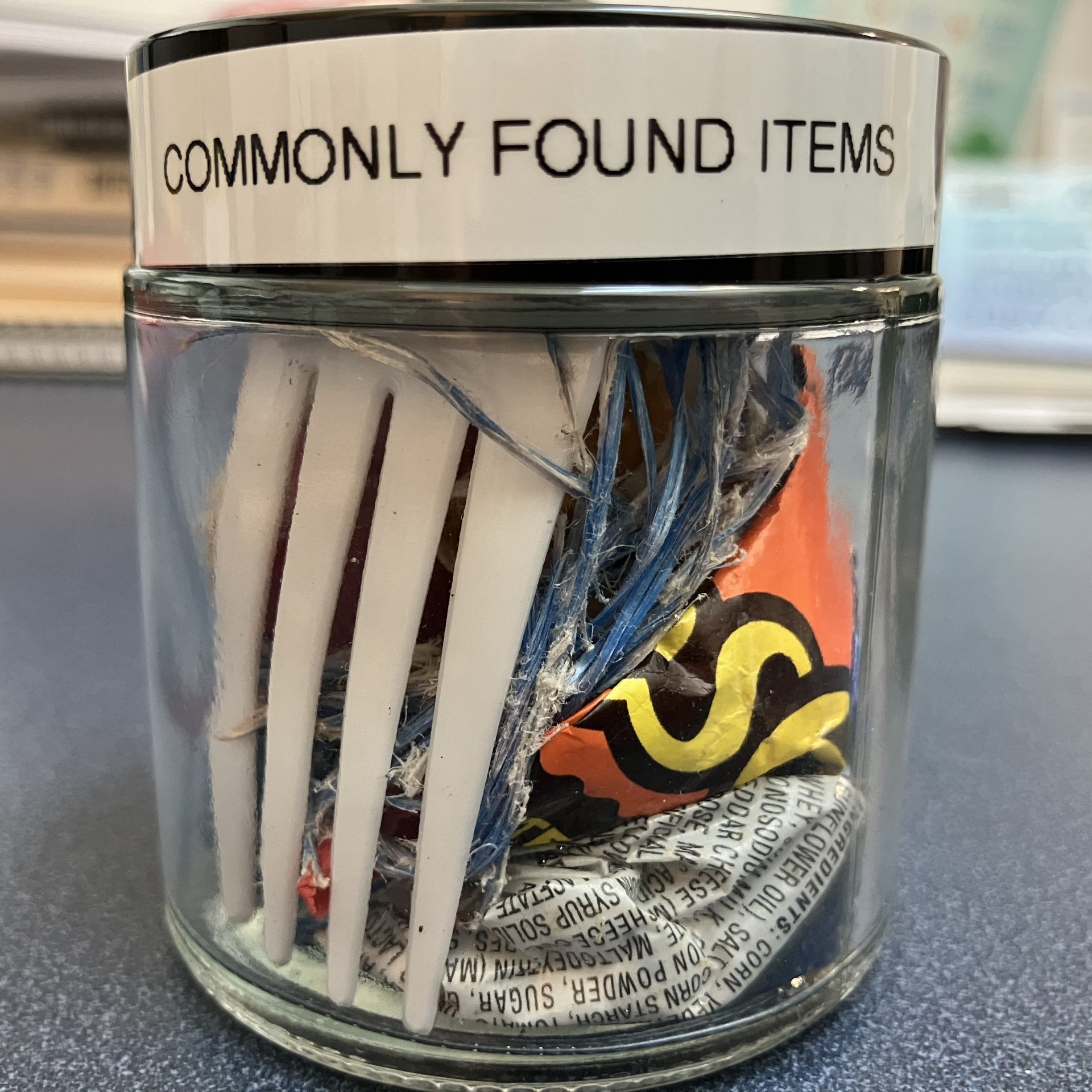
- Bottle caps
- Cutlery
- Food wrappers / chip bags
- Straws
- Cigarette butts
- Cigar tips
- Rope
- Shot gun wadding
Entanglement items
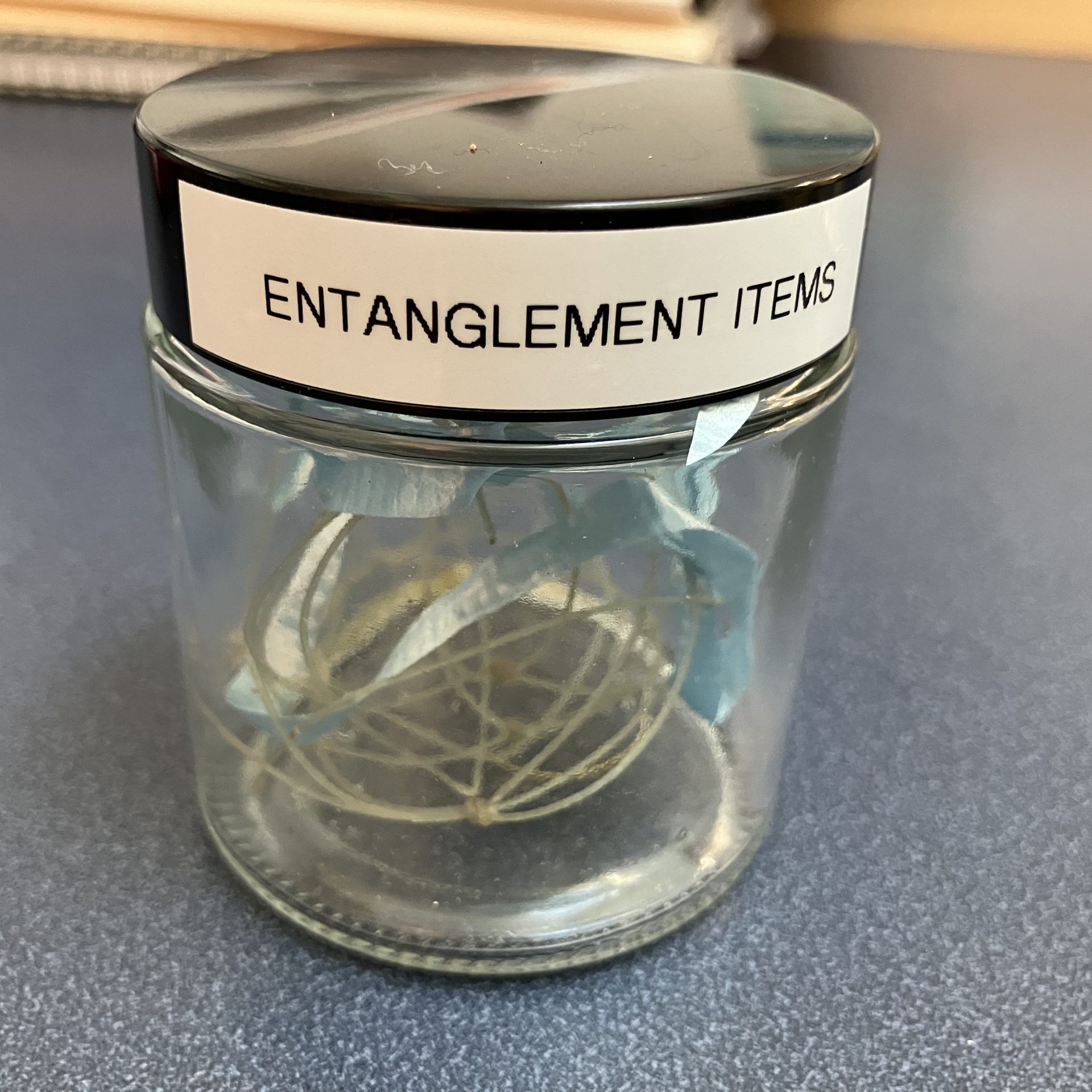
Monofilament – also known as fishing line. When discarded in the ocean, this free-floating material can wrap around animals, preventing them from eating, swimming, or engaging in everyday activities, even cutting into their muscle with no way for them to break free of it. It is a slow painful way to die.
Nylon rope - used on boats and in the fishing industry. Animals can get the rope trapped in their gills, mouths, and/or around their bodies.
Balloon strings – animals can become entangled in balloon strings and be unable to free themselves.
Trash that animals can mistake for food
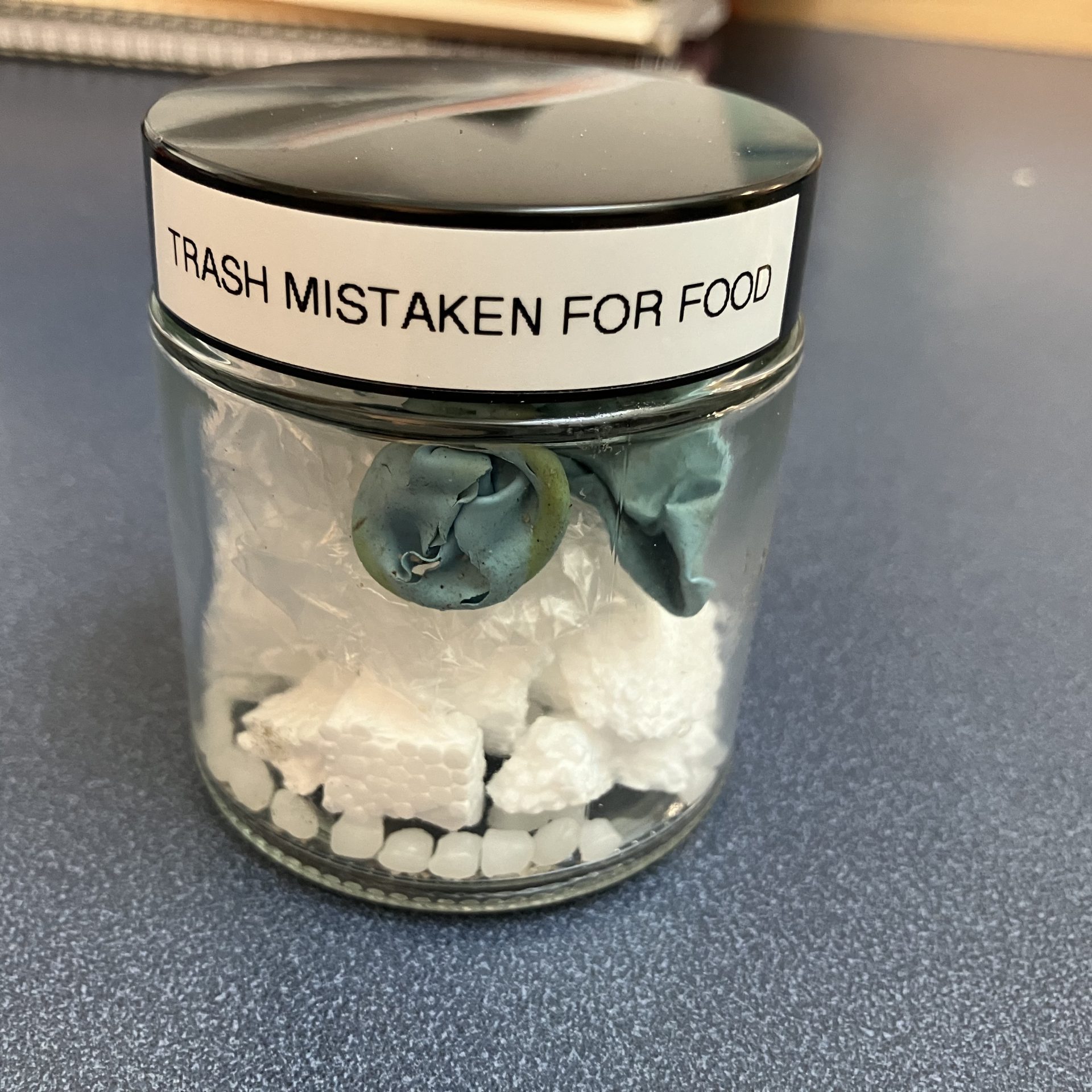
Small floating pieces of colorful plastic particles are easily consumed and can be more attractive to hungry animals than other types of marine trash. Once eaten, however, plastic provides no nutrition and can cause internal injury, intestinal blockage, starvation, and even death to marine life. https://marinedebris.noaa.gov/why-marine-debris-problem/ingestion
Styrofoam pieces & resin pellets can be mistaken for fish eggs. These small round plastics usually float on the surface of the water where many species feed. They're easily mistaken for fish eggs and other foods by animals like turtles, fish and seabirds.
Balloons & plastic bags can be mistaken for jellies, a common prey for marine animals. Eating these items can harm and kill animals in the ocean and on land. Whales, turtles, and other marine life often mistake balloons for their natural prey, such as jellyfish and squid. Once eaten, balloons can block the digestive systems of animals, causing a long and painful death through starvation.
Fishing gear debris
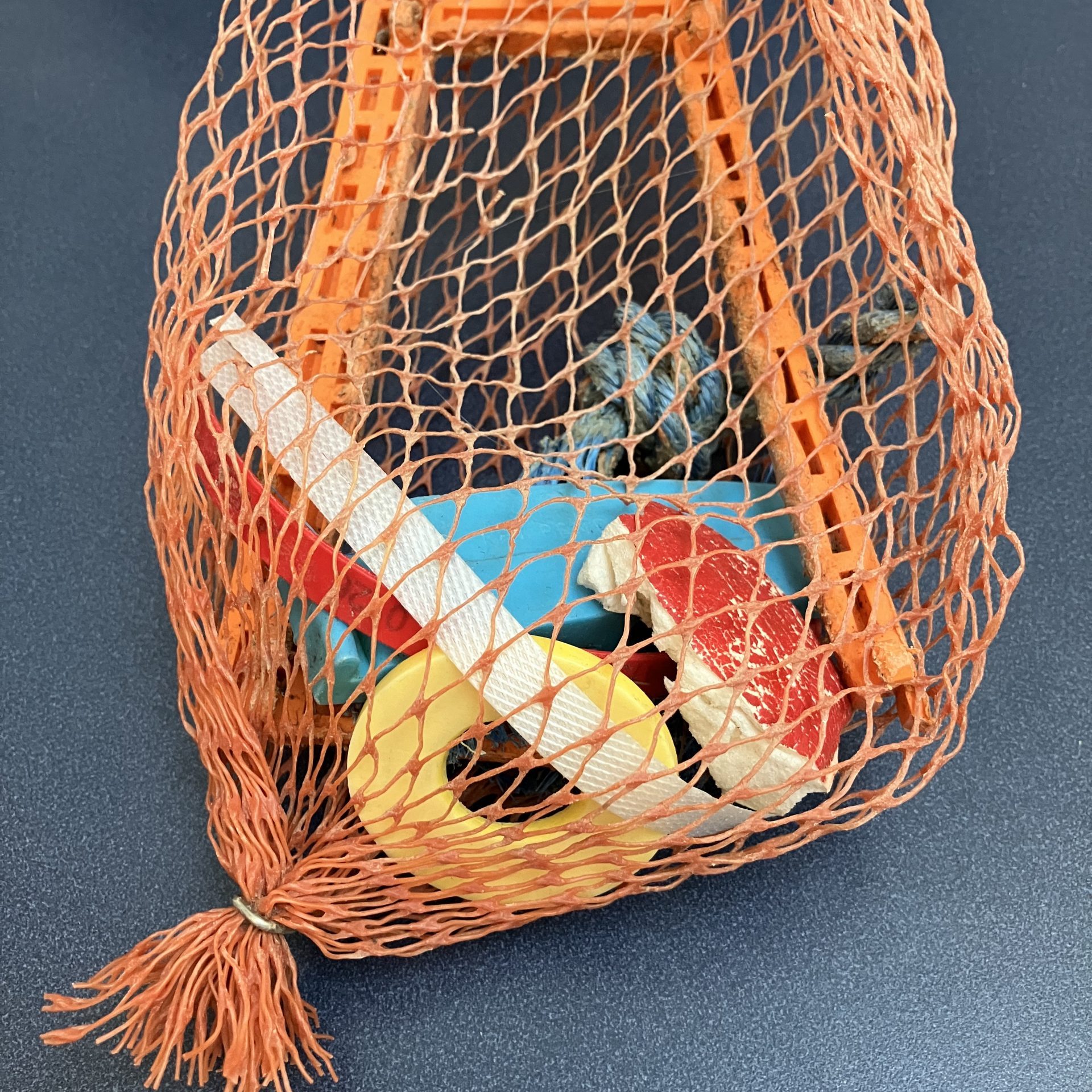
The Trash Tote contains a sub-set of debris related to fishing gear. The contents are stored in a lobster bait bag and include:
- Bait bags
- Lobster trap ID tags*
- Elastic lobster claw bands
- Rope knots
- Plastic strappings
- V-joint used on lobster traps
- Foam buoy pieces
- Washers
*Lobster trap ID tags are valuable trash items. These rigid plastic bands, found in a variety of colors, are attached to individual lobster traps and include unique information including the year of issue, the license #, the state and fishing zone. If you find one, please hold on to it and contact the Center for Coastal Studies, ccs@coastalstudies.org. The data from the tags are used to support the development of new trap ID methods.
Debris from accidental mass releases
Sometimes, mass quantities of items are accidentally released into the ocean, often from cargo ships transporting goods across the ocean. Some famous incidences of this were the loss of five 40-foot containers of Nike running shoes from a Pacific cargo ship in 1990 and found along the U.S. and Canadian West Coast. Another was the 1992 spill of 28,800 "Friendly Floatees" -- plastic bath toys including yellow ducks, red beavers, blue turtles, and green frogs -- during a storm Pacific Ocean. Some of the toys landed in Hawaii and other Pacific shores, while others spent years frozen in Arctic ice before reaching the North American Eastern Seaboard as well as British and Irish shores, fifteen years later.

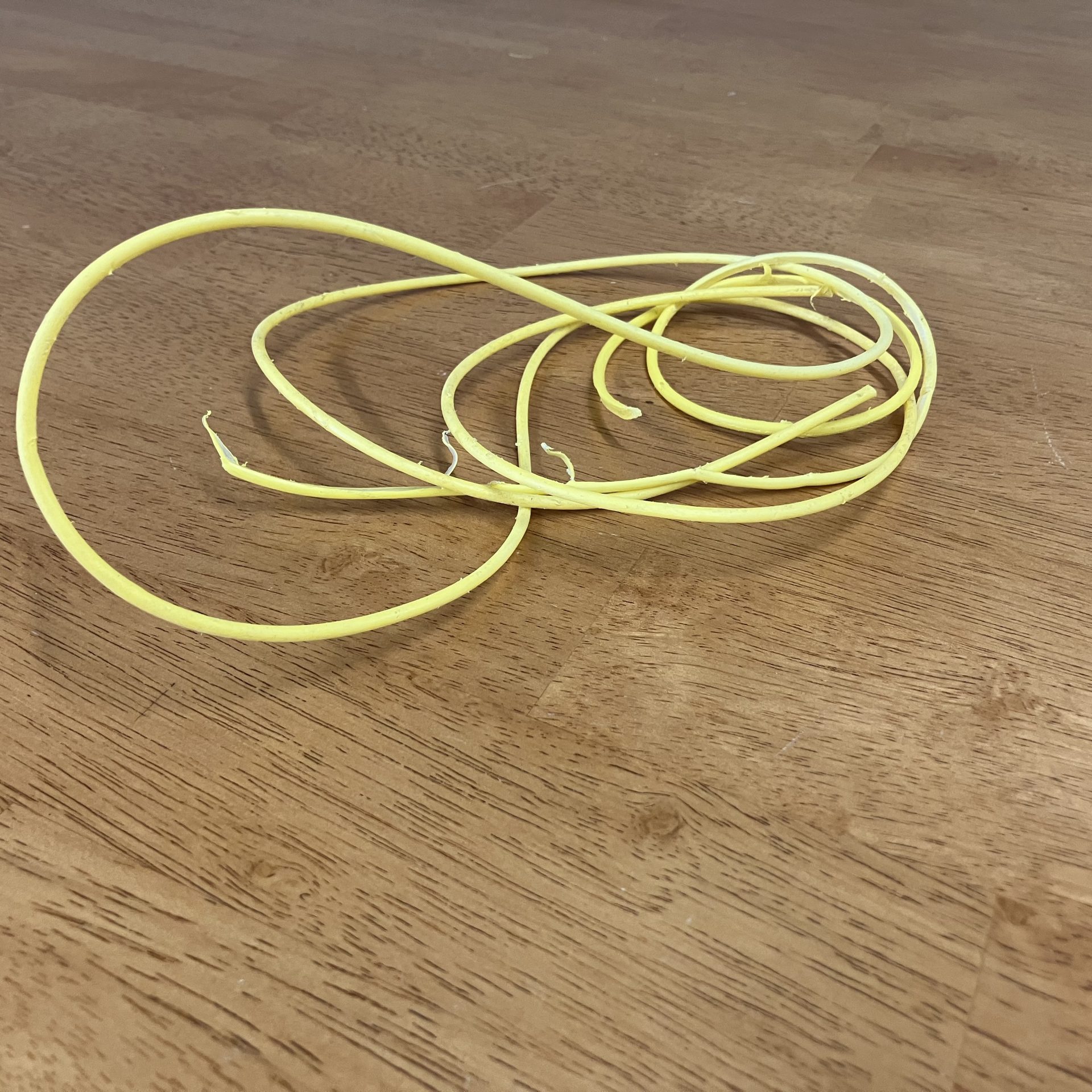
Hooksett disks - four million of these round, white plastic biofilters were accidentally released into the Merrimac River from a NH wastewater treatment plant in 2011. In a treatment plant, the filters provide additional surface area for bacteria to grow on. A month after the spill, the disks began turning up on Cape beaches, and in the years since, they have been found along the North American East Coast from Connecticut through Nova Scotia as well as off the U.K. and Scandinavia. The disks may be found whole or in pieces. Add disks you may find to the tracking map at reportdisks.org.
Explosive shock tubing - this thin hollow plastic tubing -- usually a bright yellow -- began showing up on Cape beaches in 2021. Found in lengths anywhere from 0.5 inches to 80 feet (2 cm to 24 meters), at first, its source was a mystery. After some digging by staff at the Center for Coastal Studies, it was found that the tubing was used to conduct underwater blasting work in the Boston Harbor dredging project from June 2021 through January 2022. If you find shock tubing during a clean-up, you can report the date and location it was found as well as the length at anecdata.org/projects/view/1041. The data are used to develop future containment strategies.
Microplastics
Microplastics are tiny bits of plastic about the size of a pencil eraser (5mm or less). Sometimes they're so small we can't see them easily with our eyes.
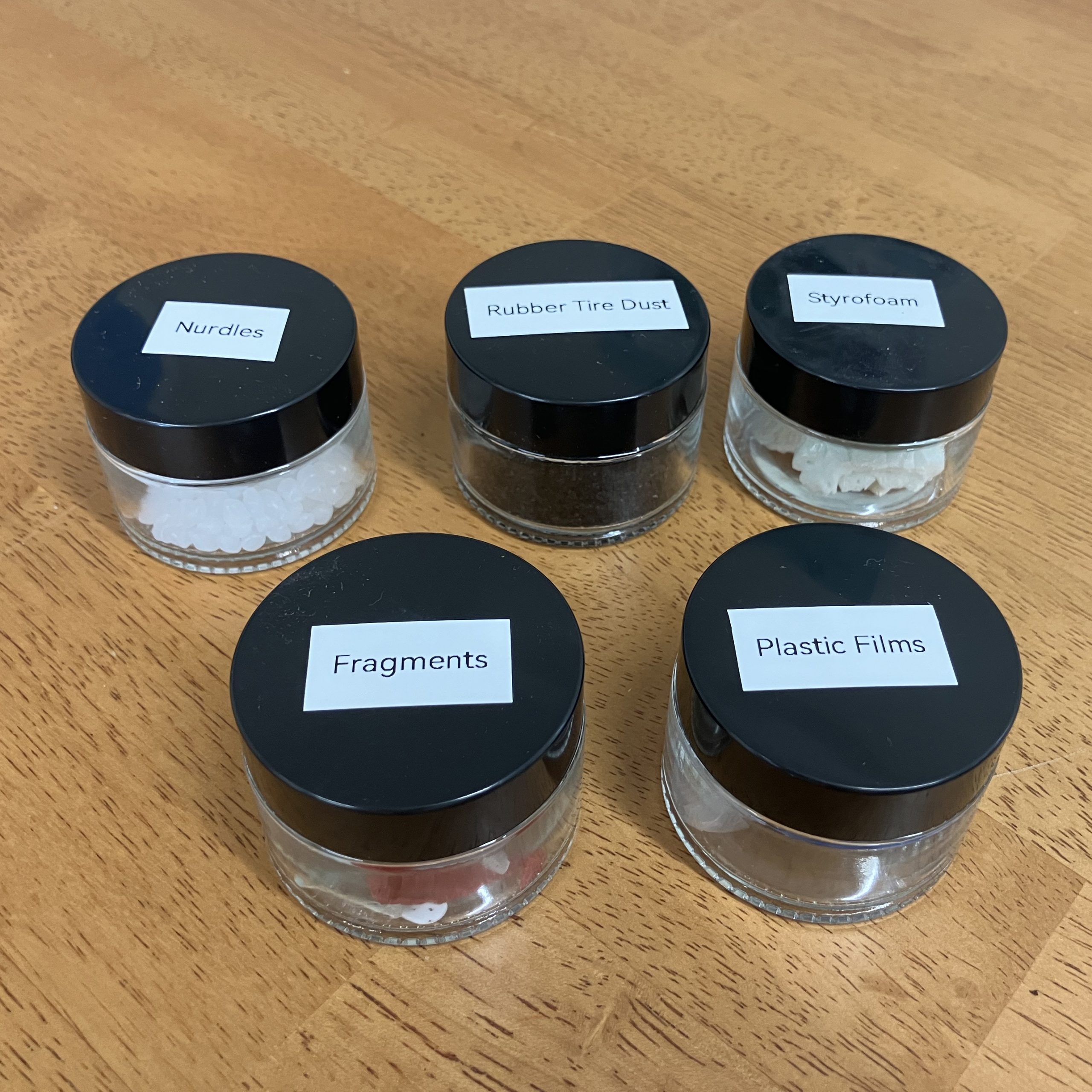
Films are flexible pieces of plastic bags and wrappers. These may become brittle over time due to weathering from the sun and wave action.
Foams are pieces of expanded or extruded polystyrene (or Styrofoam). Sources include coffee cups, takeout containers, dock flotation, among others. Its texture is generally soft but can become brittle or stiff due to weathering.
Nurdles / Pellets are used in the production of plastic products. They are usually round and smooth and have a manufactured appearance and feel.
Tire dust is created by friction between the road and vehicle tires. By mass, tire dust may represent more than 70% of all microplastics in the ocean. Surprised? Check out this StoryMap to learn more about tire dust.
Fragments of plastic result from the break up of larger rigid plastics. When plastic is exposed to the elements like sun and wave action it can become brittle and break into many smaller pieces of plastic.
Resources
DATA CARDS
A variety of trash collection data cards exist and two are linked below. Beach clean-up teams can decide which card works best in their area or create a card to reflect the unique types of trash found in different locations. Some may prefer to use a phone-based app to track their data collection, using CleanSwell, the NOAA Marine Debris Tracker, or other app.
- Ocean Conservancy trash collection data card
- Center for Coastal Studies trash collection data card - this card contains a specific category for trash related to the fishing industry
PUBLICATIONS
Field Guide to Marine Debris - created by the Center for Coastal Studies, Provincetown, MA. This guide is exceptionally well organized and provides photos of every type of debris one is likely to find during a beach clean up. Chock full of useful information, it is highly recommended.
Guide to Marine Pollution Sources and Solutions - created by WHOI Sea Grant for the Cape Cod Trash Tote, this is a handy tool for teaching about marine pollution. Trash can end up in the ocean from many sources as shown on this Cape Cod map. Review the list of ways to create less waste and things you can do for trash-free waters.
Guide to Plastic Identification - created by WHOI Sea Grant for the Cape Cod Trash Tote. Learn about the common sources of microplastics and the seven categories of plastic, the products are made from them, and how readily they can or can't be recycled. Remember: Recycling is the last best option. Reducing our use and reusing items are preferred.
NOAA Microplastics Marine Debris Fact Sheet - a two-page factsheet about what microplastics are and why they are a problem.
LESSONS AND TOOLKITS
Educators Guide to the Trash Trunk: A Kit for Learning about Marine Debris. Created by Great Lakes Sea Grant who developed the Trash Trunk, this 128-page educators guide provides a collection of lessons, activities and supporting materials to be used in the classroom.
Educators Guide to Marine Debris - Created by NOAA and the North American Environmental Protection Association, this guide is designed to provide maximum flexibility for educators in both formal and informal settings. It may be used as a standalone teaching tool, or to supplement lessons in other areas. This guide includes information about marine debris and useful lessons for students grades K-12, with a focus on STEM (Science, Technology, Engineering, Mathematics) objectives.
Trash Shouldn't Splash Toolkit - Created by Falmouth Water Stewards/Skip the Straw and Sea Education Association (SEA) with funding provided by the NOAA Marine Debris Program, the toolkit provides strategies, best practices, and examples of successful, student-driven campaigns to reduce single-use plastics in communities.
LINKS
Check out this really cool short film about marine debris.
